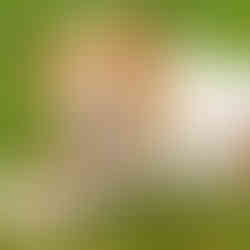Why Dogs Chew: Understanding Canine Chewing Behaviour
- Jacynta Donald
- Jul 16, 2024
- 2 min read
Chewing is a natural and essential behaviour for dogs, driven by their instinct to tone jaw muscles and explore their environment. While this urge is hard-wired into our furry friends, it can become a challenge when it involves your favourite shoes or furniture. Understanding why dogs chew and providing appropriate outlets for this behaviour can help maintain a happy home and a contented dog. In this blog, we'll explore the reasons behind canine chewing and offer practical tips for managing and redirecting this behaviour effectively.
Biologists tell us chewing is all about toning jaw muscles. Dogs no longer need to split bones and grind down marrow to survive, but the urge is hard-wired into them. And into some more than others. Some dogs live to chew; others can take it or leave it. How often dogs chew and what they chew also fall under individual taste.
What is certain is that chewing is normal and healthy, not a behaviour problem. But it can still be a regular problem-for you and your furniture.

It's not a phase.
Puppies do chew more, yes. But chewing isn't like teething in babies; it won't peter out and eventually stop. All dogs chew some and some dogs chew a lot. Whether you have a puppy or a newly adopted grown dog, give him plenty of allowed things to chew right away to get him hooked on those instead of your shoes.
The things dogs chew.
Edibles: Chew bones, pigs' ears, bully sticks, greenies, raw hides, etc.
Non-Edibles: Tennis balls, nyla bones, Kongs (without food), etc.
Dissectible Things: Plush toys, rope toys, Hide-A-Bee (Squirrel, Bird) etc.
Puzzle Toys: Stuffed Kong, stuffed marrowbone, tricky treat balls, etc.
Experiment to find out what your dog prefers. Always have a mixed selection at hand and rotate different types of chewies to keep your dog interested.
Training Steps:
Step 1. Prevent mistakes. When you can't supervise, put your puppy or dog in an enclosed, dog-proofed area with a sanctioned chewie.
Teach good chewing choices. Audition a range of chewies until you find the ones that most appeal to your dog. Dogs have texture preferences, so try to match what yours like. If he is attacking the couch pillows, try giving him plush toys. If he is eyeing the table leg, try a bone. Praise liberally when your dog chews something allowed.
Interrupt mistakes. If your dog chews the wrong thing, interrupt and trade him for something he can chew on. Praise liberally when he does.
Repeat if needed. If mistakes happen a lot, revisit step 1. Go back to using an enclosed, dog-proofed area until your dog is consistently making better chewing choices.
Training Tip:
Rotate different types of chewies to keep your dog interested.
Troubleshooting:
Is your dog suddenly chewing a lot? Is this a new habit? Make sure he is getting enough exercise and has access to things that are okay to chew.
By understanding and addressing your dog's natural chewing instincts, you can create a harmonious environment where both your dog and your belongings coexist peacefully. Provide a variety of appropriate chew toys, monitor your dog's behavior, and guide them towards healthier chewing habits. For further assistance, Doggie Diplomas offers home-based training to help you and your dog succeed.












